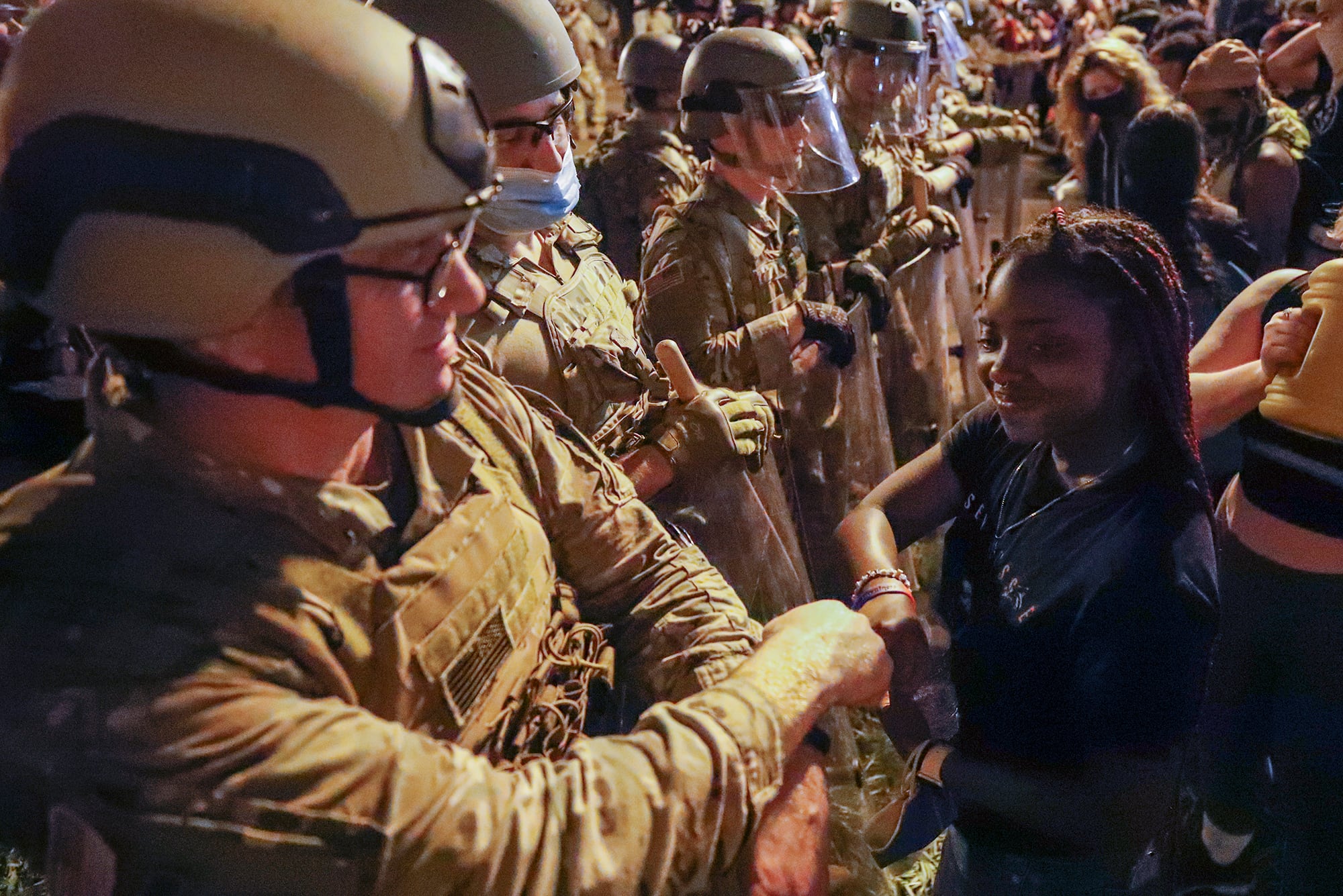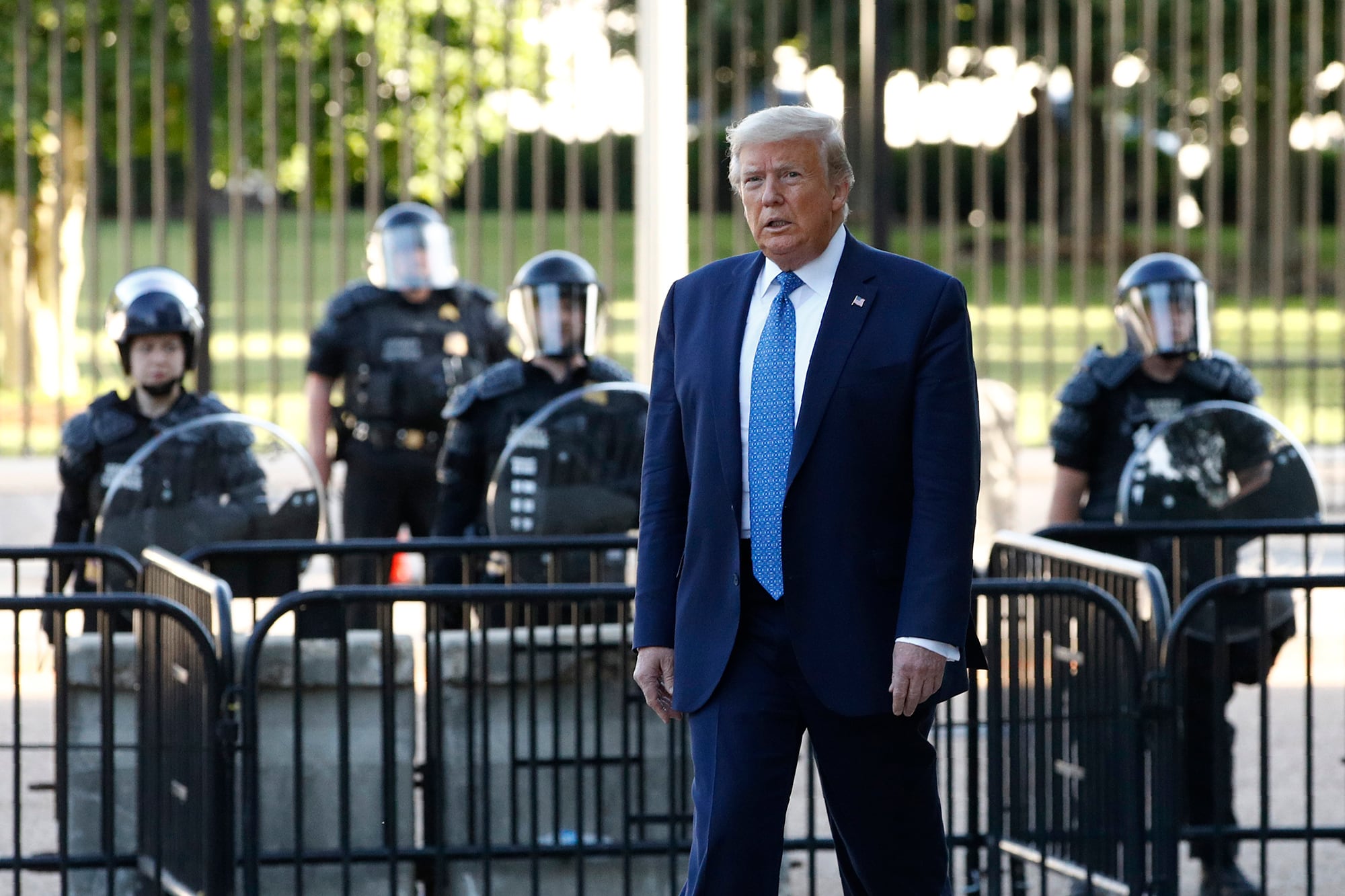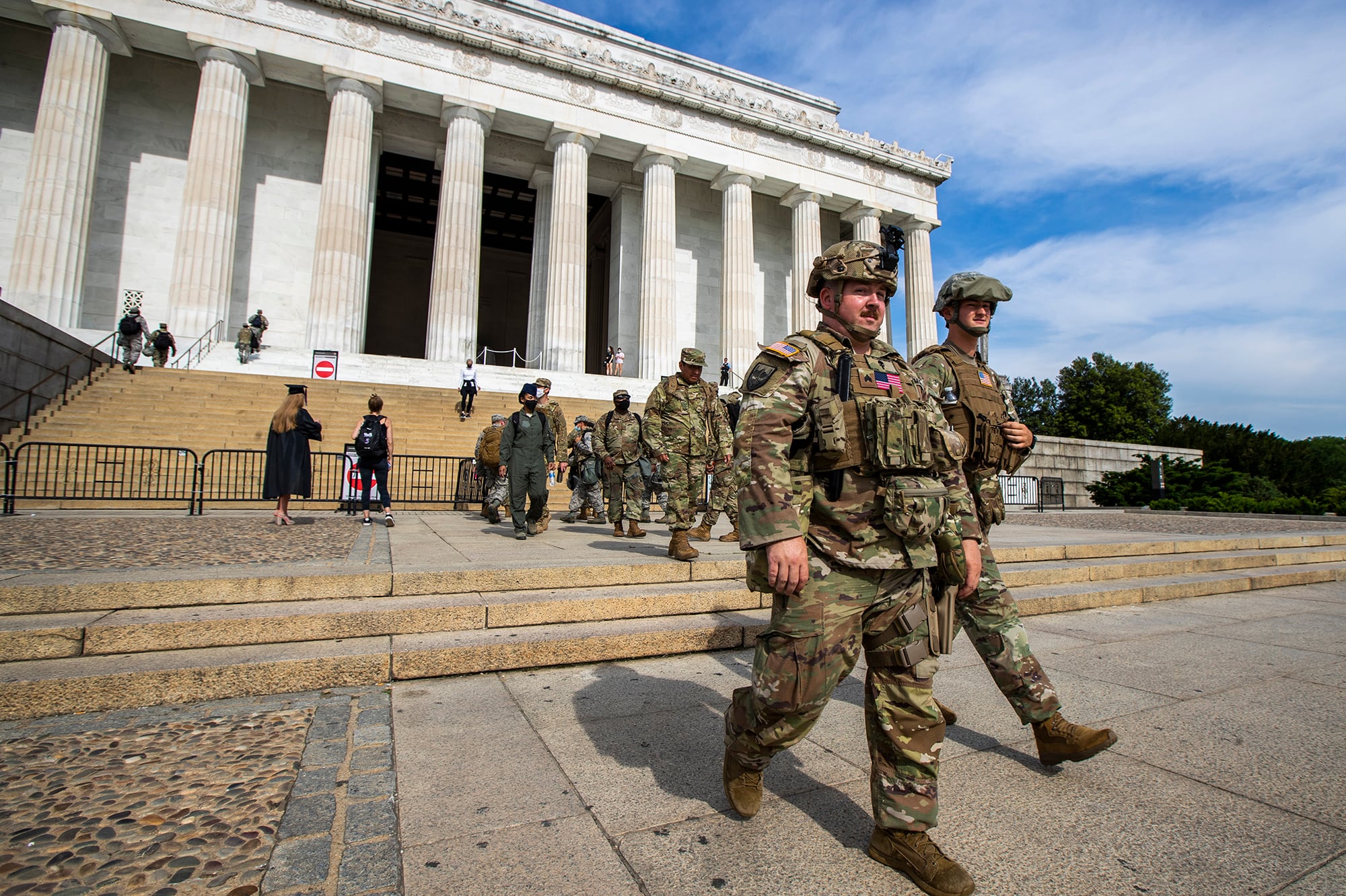Defense Secretary Mark Esper has ordered an after-action review of the National Guard’s response to civil unrest that roiled the nation in the wake of the May 25 killing of George Floyd, a black man prosecutors say was murdered by a white Minneapolis police officer.
“The after action review will specifically evaluate the National Guard’s efforts working with local and federal law enforcement across the country during the last two weeks,” the Pentagon announced in a media release Thursday night.
Esper has directed Army Secretary Ryan McCarthy to organize and lead the review, the release states.
“In recent weeks, the National Guard has performed professionally and capably in support of law enforcement in cities across the United States,” Esper said in the statement. “I have the greatest respect for, and am deeply proud of our soldiers and airmen who served during this period to ensure that peaceful protesters could execute their First Amendment rights, and that they and others would not suffer from violence against themselves and their property. I have full confidence in Secretary of the Army McCarthy to lead a robust review.”
At the height of the unrest, governors in 33 states and the District of Columbia activated more than 41,500 National Guard members to assist state and local law enforcement in support of civil unrest operations, according to the National Guard Bureau.
Across the country, protests sometimes became violent.
In Louisville, Kentucky, a barbecue cook was fatally shot by a National Guard member after the cook fired his gun as law enforcement approached on a night of protests, a state official said Tuesday.
David McAtee was killed May 31 while he was cooking at his eatery miles away from the downtown demonstrations. Louisville Metro Police and National Guard soldiers were in the area responding to a report of a crowd gathering when the shooting occurred.
J. Michael Brown, secretary of the state’s executive Cabinet, said Tuesday that Kentucky State Police investigators examined shrapnel from McAtee’s body and matched it to rifles carried by National Guard members.
“So it’s clear, the fatal shot came from the National Guard,” Brown said. “We have no doubt about that.”

In addition, several Guard troops were injured, including five in Washington, D.C. And several Guard troops contracted COVID-19 while on duty.
The decision to bring in additional Guard units tinto D.C. came after several days of protests that resulted in violence and damage.
“Sunday evening, security elements were almost overwhelmed,” McCarthy said during a Sunday call with reporters. “You had buildings damaged and defaced, lit on fire, people trying to get to the fence (by the White House).”
The Guard troops “were in the second row behind law enforcement,” McCarthy said, but still “five soldiers were hit in the head with bricks. One had a severe concussion. All five were treated at the hospital and one was sent home. It got very violent down in the park in particular.”
Maj. Gen. William Walker, commanding general of the D.C. National Guard, explaining that National Guard troops “have been protecting the capital and the nation since 1802,” said Guard troops were “the last line of defense” supporting Park Police, Secret Service and other law enforcement agencies.
“On a couple of occasions” protesters “penetrated our line. Our guardsmen, Army and Air, held the line and kept people from advancing onto the White House proper.”
Repeating Esper’s comments about not wanting to utilize the Insurrection Act allowing active-duty troops to participate in quelling civil unrest, McCarthy said on Sunday that discussion came up because it was unclear how quickly National Guard troops could be activated.
“We didn’t want to do it,” said McCarthy. “Once we went to that escalation, it is very difficult” to undo it. Elements of the 82nd Airborne division were “on the other side of the river, but did not cross the line…we did everything we could not to cross that line… We had the 82nd Airborne at Fort Belvoir. That’s how close we were.”
RELATED

On June 2, the Pentagon announced it moved about 1,600 troops from multiple active-duty Army units into the National Capital Region to support civil authorities operations.
Esper authorized the movement of an infantry battalion designated Task Force 504, assigned to the 82nd Airborne Division’s Immediate Response Force based at Fort Bragg, North Carolina.
The after-action report ordered by Esper will address a range of issues, including training, equipping, organizing, manning, deployment, and employment of National Guard forces, according to the release.
The report findings will be submitted to the secretary of defense by July 30.
There is already an ongoing investigation, known as a 15-6, into the D.C. National Guard’s use of helicopters around 10 p.m. on Monday, June 1, McCarthy and Walker told reporters Sunday.
Clarifying his role in the helicopter incident, McCarthy said that it was his decision to order the D.C. National Guard to fly helicopters over protesters “to observe and report” on their activities.
Cell phone video and witness accounts show two D.C. National Guard helicopters, normally designated for use in medical evacuations, hovering low enough to create a deafening noise, snap some trees and spray protesters with rotor wash on Monday.
Walker said that the helicopters, marked with the Red Cross signifying their use as MEDEVAC transports, had clearance to fly low and even land to pick up any injured. Walker, saying he did not give the order to use the helicopters to disperse crowds, declined to offer specifics on how that happened, adding that an investigation should be wrapped up and was supposed to be presented around midweek.

Pentagon officials told Military Times Thursday night could not say if the after-action review will affect the delivery of the results of the 15-6 into the helicopter incident.
In addition, McCarthy and Walker on Sunday addressed the role the National Guard played during a protest at Lafayette Square earlier on the evening of June 1 in which demonstrators were hit with some form of tear or pepper gas by Park Police.
At Lafayette Square, Walker said that Guard troops were playing a supporting role clearing the way for Trump and other dignitaries, including Defense Secretary Mark Esper and Army Gen. Mark Milley, chairman of the Joint Chiefs of Staff, to visit St. John’s Episcopal Church, damaged a day earlier by fire set by demonstrators.
Walker said that while Guard troops in Lafayette Square had been pelted with frozen water bottles and eggs by protesters, those troops did not “use force of any kind on protesters. As far as National Guardsmen pushing back, that did not happen. They were never aggressive, never offensive. They took a strictly defensive posture.”
On Monday, McCarthy, Walker and Army Chief of Staff Gen. James McConville briefed members of the House Armed Services Committee in a non-public meeting.
The session was originally scheduled for late last week, amid concerns that guardsmen may have overstepped their roles as security support for D.C. police responding to some of the massive racial equality demonstrations outside the White House in recent days.
But House Armed Services Committee members have said they still have lingering questions about how those discussions progressed, and whether guardsmen were put in an uncomfortable political role instead of their traditional support response.
Democratic members are also sparring with Esper and Milley, after committee Chairman Adam Smith, D-Wash., vowed to bring the Pentagon leaders to Capitol Hill for a full public hearing on the issues this week.
Howard Altman is an award-winning editor and reporter who was previously the military reporter for the Tampa Bay Times and before that the Tampa Tribune, where he covered USCENTCOM, USSOCOM and SOF writ large among many other topics.








